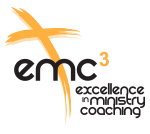by Eddie Pipkin

Image by annasiracusa from Pixabay
I’m in Denver, Colorado this week. It’s a great city, with lots to do and see. One of the highlights is visiting the many cultural institutions, attractions, and recreation and nature spots along the South Platte River which runs through the heart of this thriving community. The riverfront was not always a destination. It’s still recovering from a century-long reputation as a polluted and unattractive industrial byway. The dramatic renaissance which is channeling the energy of the Queen City of the West is an organized effort by many stakeholders. Its success demonstrates the positive vibes that can be generated by reimagining and refurbishing a tired, neglected space. It’s a strategy that can work surprising wonders for local churches, too.
It’s hard to overestimate the impact that revamping such a critical landscape can have on the civic self-confidence of a growing city with a strong personality.
Here’s an overview from the Urban Land website: “Denver: A Renaissance on the South Platte Riverfront”:
The history of Denver is closely intertwined with the South Platte River. From the city’s initial settlement along the riverbanks in 1858 to subsequent urbanization that altered its natural course, the South Platte has played a significant role in Denver’s evolution. For much of the 20th century, however, metropolitan development turned away from this vital waterway.
Now, through a handful of thoughtful, transformative developments, the city is reclaiming its relationship with the South Platte River. The projects promise to create dynamic urban landscapes for working, living, and recreation while seamlessly integrating with the natural environment. In essence, these developments are looking to spotlight the South Platte as a long-overlooked asset and a key to the city’s future.
Over the last few decades, a collaborative effort involving the city and county of Denver, the Mile High Flood District, The Greenway Foundation, the Colorado Water Conservation Board, and the U.S. Army Corps of Engineers (USACE) has laid the groundwork for revitalizing Denver’s urban riverfront. Rather than simply trying to coexist with the river, this collective vision presents a once-in-a-lifetime opportunity for development that thoroughly embraces the river and creates a vibrant, sustainable link to the larger city.
That’s how you get such a project done! You need key players engaged in the vision. The vision itself has to be clearly stated, and a practical roadmap has to be formed for overcoming obstacles and seizing the initiative. Once some of the key components fall into place, the excitement grows, and more people buy into the concept. The momentum carries the project forward, and a thousand creative ideas are born, empowering diverse groups and goals.
It doesn’t all have to be big budget, grandiose elements either. Small pocket projects are spun out in a centrifugal effect that sees related spinoffs reclaim abandoned storefronts and park spaces.
The originators boldly state their ultimate destination:
The collective impact of these riverfront developments will transform downtown Denver. They also mark the rebirth of a neglected natural treasure, and create a place where residents can connect with nature while building a sense of community.
In the not-so-distant future, families will picnic on the banks of the South Platte as cyclists zip along a network of interconnected trails and kayakers paddle in the water. This future is within reach, thanks to the vision of dedicated organizations, thoughtful developers, and a city ready to embrace its natural heritage. The South Platte River is Denver’s best-kept secret, and it’s finally time to celebrate its return to life.
Now, think about that kind of developmental overlay for your local church. You could certainly harness the kind of energy inherent in a major conceptual catalyst: that’s classically what a major new campus capital project accomplished, and many of you have been a part of one of those projects. A grand new building leads to proliferating ministries!
A generation ago such projects were all the rage.
But these days it’s more likely that you know of local churches with strained budgets and underutilized physical spaces. These are the contexts in which a micro-form of the Denver reiver renaissance is applicable. Even small spaces reimagined and repurposed can pay big dividends for helping groups find fresh energy.
You may have meeting rooms that have become soulless chambers, unclaimed by anyone in particular, with no charm or personality or obvious purpose. You may have a room that has become an irksome dumping ground for ministry detritus. You may have an old chapel that is unused and unloved, or fellowship space that has fallen into disrepair and maybe even smells a little funky.
Such spaces can be reborn and repurposed. This can be done with hands-on labor and limited budgets. Elbow grease and donations can carry the day. What you need is a person or group who wants to love and use a space (and who, hopefully, is also generous in sharing such a remastered area). Sometimes this means easing an older, inactive group into giving up cherished territory – help them see it as a way to leave a legacy – you might even be able to get them excited about contributing to the transition.
By re-imagining an old space, a local church can create an environment that fosters collaboration and creativity. New combinations of people may find themselves working together to make things happen. New connections may be made as different groups co-share the re-imagined space. People in your community who love redesign ventures and hands-on redecorating will find purpose in the project.
For churches who may long for the glory times of growth, projects of re-imagination are a very efficient way to leverage the investments of past generations. It’s good stewardship! You are leveraging the blessings you already have. And don’t forget about the possibility of partnering with outside groups, both to give them space to do what they do, but also to let them make enhancements to your campus and to partner meaningfully with your people.
A refreshed space can symbolize a new beginning and help in rebranding efforts. It can invigorate the discipleship culture, providing focal points for service, hospitality, study, generosity, and fellowship (and thus communicating the value your leadership puts on those areas of Christian life). There’s nothing like a dedicated space (even a dedicated part of a larger space) to make movements meaningful.
It doesn’t have to be limited to reshaping existing spaces either. Perhaps you are in an environment in which all of your spaces are being used to maximum effect. Look for previously unrealized interesting spaces to bend to new uses. Outside spaces are prime territory for new ideas: garden spaces, exercise spaces, wildlife areas and environmental mitigation, outdoor stages and meeting spaces. How about a rooftop fellowship deck with comfy seating and cute lighting? How about a closet that can become a secret clubhouse for children or youth? Small chapel spaces can be formed (or carved out of large chapel spaces) that lend themselves to intimate prayer and reflection spaces. Stuffy old libraries can become interactive media spaces for spiritual growth (check out how your local library has been transforming.)
Think of the space on your campus that everyone hates, or everyone avoids, or no one even realizes is there. How might it become vibrant and a sign of life if given over to the right crew to re-imagine it? Take a few minutes and do that thought exercise.
What are examples from your own experience in which you have seen old spaces become new? What ministry growth resulted? How were people connected and inspired in fresh ways? Where have you seen youth ministry revitalized by visionary new space? Children’s ministry kick-started by a creative facelift? Hospitality and fellowship taking on new life because of a cool, re-imagined space to hang out? Share your stories in the comments section. Having trouble coming up with ideas?
I suggest a quick visit to Denver.





Leave A Comment
You must be logged in to post a comment.